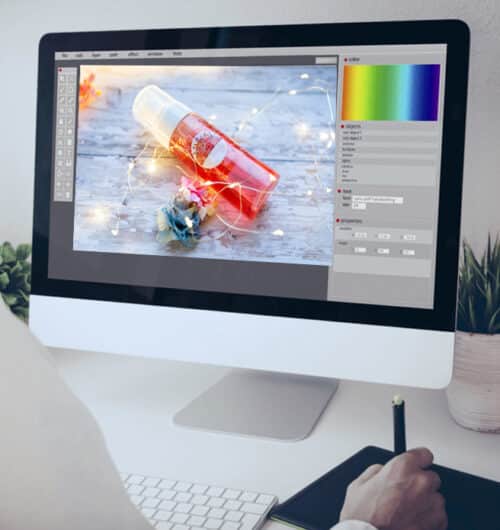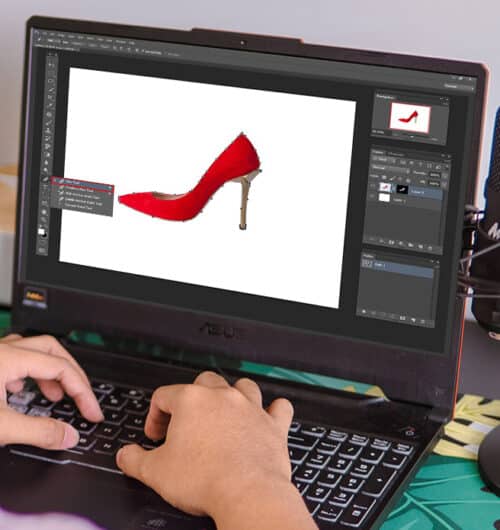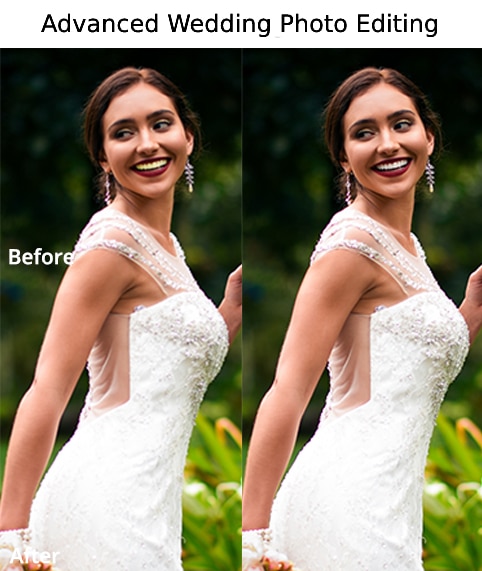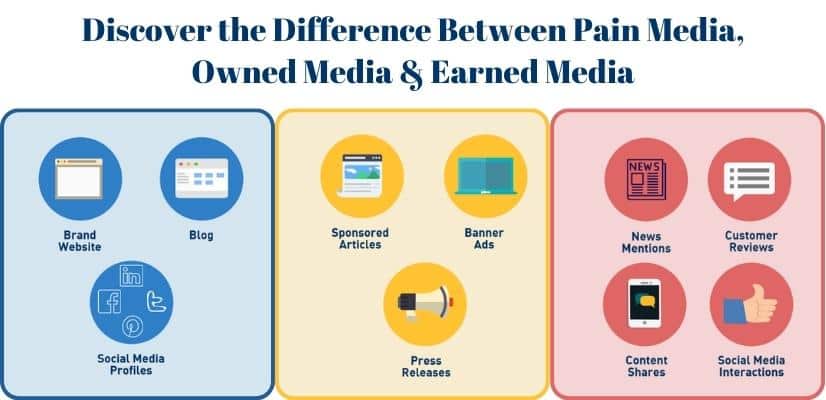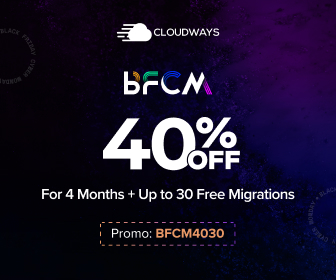The term "media" is used often within the context of marketing. But what does it mean? What do people actually mean when they say "marketing"? And what is "media"? Let us explain.
Let's start with the definition of media. A medium is something that allows information to travel from one place to another. For example, radio waves allow messages to travel across space. This is why radio stations exist. Television, newspapers and magazines are examples of media. So, when someone says "we use media", they usually mean that they're doing things like advertising on TV, putting articles on news sites, publishing books, etc. These activities are all forms of media.
So, now let's talk about the three kinds of media that companies use to market themselves.
Owned media is anything that belongs to the company. This could include things such as logos, brands, trademarks, products, software, music, video games, movies, books, clothing, furniture, buildings, etc. Anything that the company owns is considered part of their brand.
Earned media is anything that the company earns. Earned media includes things like press releases, social media posts, blogs, webpages, videos, podcasts, photos, reviews, etc. All of these things are ways that the company gets free publicity.
Finally, paid media is anything that the customer pays for. Paid media includes things like ads on TV, print publications, billboards, radio, online advertisements, eBooks, etc.
Now that you've got a better idea of what these different types of media are, you might want to consider adding some of them to your marketing mix. You don't have to buy every single thing that you see advertised. Instead, think about whether there's a good reason to use those particular items.
If you think that a product might work well for your target audience, go ahead and try it out. Then, evaluate whether it worked or not. Maybe you didn't end up buying the item, maybe you did. Either way, you're learning something useful.
What is Paid Media?
Paid media is a term that covers all forms of advertising that require payment in order to reach an audience, This includes traditional media such as television, radio, and print, as well as digital platforms such as search engine marketing, display advertising, and social media advertising.
Paid media can also be a riskier form of advertising, and it can be perceived as less trustworthy than organic or earned media, as it is seen as a form of “buying” placement and attention.
Benefits of Paid Media
There are a lot of benefits to using paid media to promote your business. Here are a few of benefits of paid media:
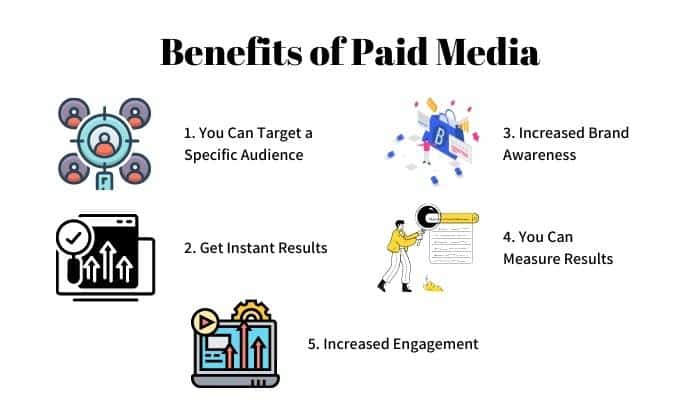
1. You Can Target a Specific Audience
With paid media, you have a lot of control over who sees your ads. You can target people based on things like age, location, gender, interests, and even income level. This ensures that your ads are being seen by the people who are most likely to be interested in what you're selling.
2. Get Instant Results
Paid media can provide instant results, unlike organic methods like SEO which can take months to show results.
3. Increased Brand Awareness
Paid media can help increase brand awareness by getting your name in front of potential customers. This is especially true if you run ads on popular websites or social media platforms.
4. You Can Measure Results
When you use paid media, you can track how well your ads are performing. This allows you to see which ads are working and which ones aren't. You can then adjust your campaign accordingly to get the best results possible.
5. Increased Engagement
When people see your ad, they are more likely to click on it and visit your website or social media page. This increased engagement can lead to more conversions and sales.
How to measure paid media?
Are you looking for ways to measure your paid media campaigns? If so, you're in the right place!
There are a number of key metrics you can use to measure the effectiveness of your paid media campaigns, here are some tips to get you started:
1. Engagement Rate
Engagement rate is one of the most important metrics to track when measuring the success of your paid media campaigns. Engagement rate measures the percentage of people who interact with your ad, whether it's by clicking on it, liking it, or sharing it.
A high engagement rate means that your ad is resonating with your target audience and is likely to lead to conversions.
2. Conversion Rate
This is the number of people who take the desired action after seeing your ad. For example, if you're running a campaign to promote your website, conversion would be the number of people who visit your website after seeing your ad.
3. Click-Through Rate (CTR)
Click-through rate (CTR) is another important metric to track when measuring the success of your paid media campaigns. CTR measures the percentage of people who click on your ad after seeing it. A high CTR means that your ad is effective at driving traffic to your website or landing page.
4. Brand Awareness
Brand awareness is a metric that measures the percentage of people who are aware of your brand. A high brand awareness means that your paid media campaigns are effective at raising awareness of your brand.
What are examples of paid media?
Paid media is any type of advertising that you pay for, as opposed to organic or earned media. It can include anything from traditional forms of advertising, like TV or print ads, to digital marketing tactics like pay-per-click (PPC) advertising and sponsored posts on social media.
Some examples of paid media include:
1. Display ads:
Display ads are advertisements that appear on websites. They can be in the form of banner ads, pop-ups, or video ads. Other types of paid media include paid search ads, paid social media ads, and sponsored content
2. Radio or podcast ads:
Radio ads are a great way to reach a wide audience, and they can be very effective in driving traffic to your website or product. Podcast ads are another great option for paid media, and they can be a great way to reach a niche audience that might be interested in what you have to say.
3. Video ads:
These are ads that pop up before, during, or immediately following videos. They can be a great way to reach a wide audience, and you can usually choose where your ad appears.
Owned Media
Owned media is a channel through which a company or individual can directly distribute content to an audience. The most common examples of owned media are websites, blogs, and email newsletters.
Owned media is important because it's a way for companies and organizations to build a direct relationship with their customers or audience.
Owned Media Benefits
Here are just a few of the ways that using owned media can help your business:
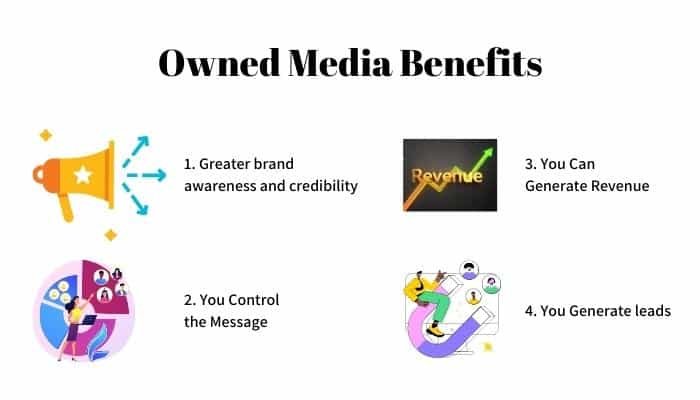
1. Greater brand awareness and credibility
When you use owned media, you have the opportunity to shape the way that your brand is perceived by your target audience. By consistently publishing high-quality content, you can build brand awareness and credibility.
Additionally, by featuring your content prominently on your website and social media platforms, you can make it easy for potential customers to find and engage with your brand.
2. You Control the Message
When you use owned media, you control the message that your audience sees. This is important because you can ensure that your message is on brand and aligned with your business goals.
3. You Can Generate Revenue
Owned media can be a great way to generate revenue. If you have a website or blog, You can also use your owned media platform to sell products or services directly to your audience. you can sell advertising or sponsorships.
4. You Generate leads
Owned media is a great way to generate leads for your business. This is because you can use your content to drive traffic to your website or landing pages, where you can then capture contact information from your visitors.
If you are looking for ways to improve your business, consider using owned media. Owned media offers many benefits, including the ability to control the message, build relationships, generate leads, and increase your visibility.
How to measure owned media
It's no secret that, as a business, you need to be using some form of owned media to succeed. But how do you measure its impact?
1. Website traffic
One way to measure your owned media is by looking at website traffic. You can look at the number of unique visitors, pageviews, and other traffic metrics. This will give you an idea of how your owned media is performing.
2. Social media analytics
This data can give you insights into which social media platforms your customers are using to interact with your brand and what content is resonating with them.
3. Sales
Another way to measure your owned media is by looking at sales. This will give you an idea of how your content is performing in terms of generating revenue.
4. Surveys
Surveys can help you understand how your customers feel about your brand and what content they would like to see more of.
Owned Media Examples
1. Your website
Your website is the most important owned media asset that you have. It is the foundation of your online presence, and should be the central hub for all of your other owned media assets.
Your website should be designed to reflect your brand and to provide a great user experience. It should be easy to navigate and should be updated regularly with fresh content.
2. Content marketing
Content marketing is the process of creating and distributing valuable, relevant, and consistent content to attract and retain a clearly defined audience — and, ultimately, to drive profitable customer action.
By creating high-quality content, you can show potential customers that you know what you're talking about and that you're someone they can trust.
3. Social media marketing
Social media marketing is creating and maintaining a strong relationship with your customers. You want to create a community of customers and followers who are interested in what you do and who will continue to do business with you in the future.
4. Email marketing
Email marketing is one of the most effective owned media channels available to businesses. It can be used to promote sales, special offers, new products, or simply to keep in touch with customers.
Earned Media
The term "earned media" has become increasingly popular among marketing and public relations professionals. Earned media is simply any coverage of your brand or company that you didn't have to pay for. This can include traditional media outlets like news outlets and magazines, as well as new media outlets like blogs and social media sites.
Benefits of Earned Media
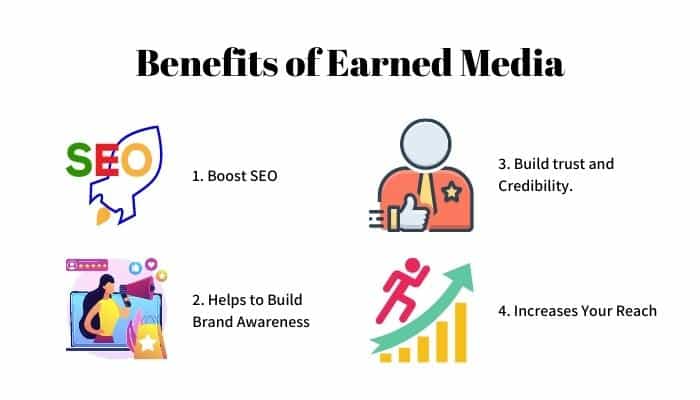
The key to using earned media effectively is to make sure that your brand is getting in front of the right people. Here are some of the benefits of earned media:
1. Boost SEO
Earned media can also help to boost your SEO. When you get links from high-quality websites, it helps to improve your website's ranking in search engine results pages.
2. Helps to Build Brand Awareness
If you want people to know about your brand, earned media can help. Getting your brand name out there is the first step to getting people to notice you. And, if you can get people talking about your brand, even better.
3. Build trust and Credibility
When you are featured in a positive news article or review, potential customers and clients will see that you are a reputable business. This can help you attract more customers and grow your business.
4. Increases Your Reach
As long as people see your brand, the more they'll like it. With earned media, you have the potential to reach a larger audience than you would with paid media.
How to measure earned media?
There are a few different metrics you can use to track earned media. Here are a few examples of it:
1. Engagement rate
Engagement rate is a measure of how engaged people are with your content. It's calculated by dividing the number of engagements by the number of reach. This metric can give you an idea of how effective your content is at driving engagement.
2. Web Traffic
If you have a website, you can also measure your brand's earned media by tracking the traffic that it receives. This can be done using Google Analytics or other web traffic tracking tools.
3. Mentions
Mentions is a measure of how often your brand is being mentioned online. This metric can give you an idea of how popular you are and how much mindshare you have.
Earned Media Examples
1. SEO
It helps to build up your brand's reputation and authority. When your brand is mentioned in positive articles and reviews, it helps to improve your brand's image in the eyes of potential customers.
2. Create great content
This is the most important thing you can do to attract media attention. Make sure your content is newsworthy, interesting, and informative.
3. Social media
Social media is an excellent means for connecting with customers and building relationships. You can use social media to answer customer questions, offer customer support, and give customers a behind-the-scenes look at your business.
4. Reach out to influencers
One of the best ways to generate earned media is to reach out to influencers in your industry. These are people with a large following who are respected for their opinion. If you can get them to say something positive about your brand, it will reach a lot of people.

